Moccasin and Cone Butte Roundup, Montana, Ledger Incl. References to James and Andrew Fergus, 1888-1897
About Seller
6270 Este Ave.
Cincinnati , OH 45232
United States
With offices in Cincinnati, Cleveland and Denver, Cowan’s holds over 40 auctions each year, with annual sales exceeding $16M. We reach buyers around the globe, and take pride in our reputation for integrity, customer service and great results. A full-service house, Cowan’s Auctions specializes in Am...Read more
Two ways to bid:
- Leave a max absentee bid and the platform will bid on your behalf up to your maximum bid during the live auction.
- Bid live during the auction and your bids will be submitted real-time to the auctioneer.
Bid Increments
| Price | Bid Increment |
|---|---|
| $0 | $25 |
| $500 | $50 |
| $1,000 | $100 |
| $2,000 | $250 |
| $5,000 | $500 |
| $10,000 | $1,000 |
| $20,000 | $2,500 |
| $50,000 | $5,000 |
| $100,000 | $10,000 |
About Auction
Nov 19, 2020
Cowan’s Auctions, a Hindman Company, is pleased to present the November 19 Fall Auction, featuring over 400 lots of historically significant photography, manuscript material, artwork, and other ephemera dating from the 18th through the early 20th century, including the Civil War. Cowan's Auctions dawnie@cowans.com
- Lot Description
Ledger for the Moccasin and Cone Butte Roundup, Lewistown/Judith Basin, Montana. 6 x 15 in., marbled paper boards, leather spine, marbled page edges. First 65 pages utilized, with a few blanks. First pages are accounts of the Roundup members; second section seems to be counts of animals with various brands divided as to steers, heifers, and bulls, mostly in the Judith Basin for the Spring and Fall 1892 roundups; third section beginning on p. 50 contains notes from the meetings of the Moccasin and Cone Butte Roundup. The meetings take place in Lewiston, the county seat. The meeting minutes record officers, members attending, new admissions, plans for the various roundups, etc. Thus, in April 1892, the first meeting with notes, the President is Andrew Fergus, Secretary - J.L. Stuart, and Captain - W.D. Deaton. Besides these, other common names that appear are James Fergus, Herman Otten, Everett Hamilton, David Deaton. These names are also common in the James Fergus Family Papers held at the Montana Historical Society Library. Many of the M & CB Roundup ledgers and files are in the Fergus papers. Fergus and his son, Andrew, came to central Montana in about 1880. James Fergus, then 67 years of age, was sure there were opportunities to be had in this region. (see Horne, Robert M. "James Fergus - Frontier Businessman - Rancher - Miner - Free Thinker"). He would serve as state representative, state senator and delegate to the 1884 Montana Constitutional Convention.In spite of the opportunities, there were also dangers, including Indians who had been pushed off their lands, mavericks and stray cattle, rustlers, and more. Fergus joined the Moccasin and Cone Butte roundup, serving variously as its President, then secretary. These associations tried to curb rustling and other losses from their herds.In his book, Forty Years on the Frontier as Seen in the Journals and Reminiscences of Granville Stuart, Gold-miner, Trader, Merchant, Rancher and Politician (U. of Nebraska Press, 2004) Stuart gives the first members of the Roundup (p. 178): "There was now, on the Fort Maginnis range, twelve outfits, - The Davis-Hauser-Stuart, The Kohrs and Bielenburg, Robert Coburn, Henry Sieben, N.J. Dovenspeck, N.W. McCaulley, C.D. Duncan, Stuart-Anderson, W.C. and G.P Burnett, F.E. Lawrence, Adolph Baro, and Amos Snyder."
"There were also twelve outfits on the Cone butte and Moccasin range: James Fergus and Son, Robert S. Hamilton, The Judith Cattle Co., Tingley Brothers, John H. Ming, Pat Dunleavy, James Dempsey, Chas. Ranges, A. Hash, C.H. Christ, J.L. Stuart, Edward Regan. From this time on the two ranges worked together in one roundup and usually held their meeting and made the start from the 'D-S' ranch."Stuart gives a real "feel" for the event:"It was a novel sight to witness the big spring roundup pull out. Early in the morning the big horse herd would be driven in and each man would catch and saddle his mount...At the 'D-S' ranch there was usually an impromptu dance the night before and there would be quite a gathering of ladies to watch the start. Often they would ride to the first corral to watch the branding and have lunch at the chuck wagon.A roundup on the range is in charge of the captain absolutely. Every man, whether owner of the largest herd or a humble roustabout, takes his orders from the captain. There were very few orders given, every man knew what he was expected to do and did it.Work began very early in the morning. The cook was up, breakfast ready and the horse herd in as soon as it was daylight. The riders caught up their horses and saddled them and were ready to start. The men were divided into groups. The circle riders started out two together in every direction and drove to the corral all the cattle that they could find. At the corral the cattle to be branded would be cut out of the bunches and the ropers would catch and throw them. There were wrestlers and the men with the branding irons in the corral to brand and mark....The work at the corrals was hard and fast. The dust and heat and smell of singeing hair was stifling while the bellowing of the cattle was a perfect bedlam. At the close of the day everyone was tired and ready to roll in his blankets for a night’s rest.... The spring or calf roundup usually lasted from four to six weeks. As soon as it was over the hay would have to be put up at the home ranch, range cabins built or put in repair, corrals put in shape, and stray horses gathered. If the herd was being increased we tried to get the new cattle on the range not later than September first. The fall calf roundup started about October 1, and usually required four weeks. After that was the beef roundup, the most important one of all. (pp. 179-180)."We are sure there is more to discover even in this short accounting of one Montana Roundup.Front board nearly separated. Shows wear. A few pages loose.Condition
- Shipping Info
-
Buyers are required to pay for all packing, shipping and insurance charges. Overseas duty charges are the responsibility of the successful Bidder. Be aware that for larger and/or valuable items, shipping charges can be substantial. - If there is no shipping amount on listed your invoice, you will need to make arrangements to pick up or ship your purchase through an alternative shipping company. Our shipping department can be contacted at 513.871.1670 (ext. 219) or email shipping@cowans.com. - Shipping charges include insurance for your order while in transit. If you have private insurance we will adjust your charge to include only packing and shipping. - Please allow 14 – 21 days after payment to package and ship your purchase as carefully as possible.
-
- Buyer's Premium



 EUR
EUR CAD
CAD AUD
AUD GBP
GBP MXN
MXN HKD
HKD CNY
CNY MYR
MYR SEK
SEK SGD
SGD CHF
CHF THB
THB
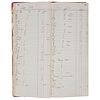
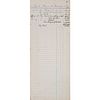

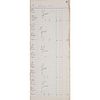
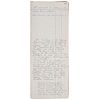
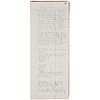
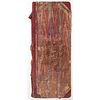

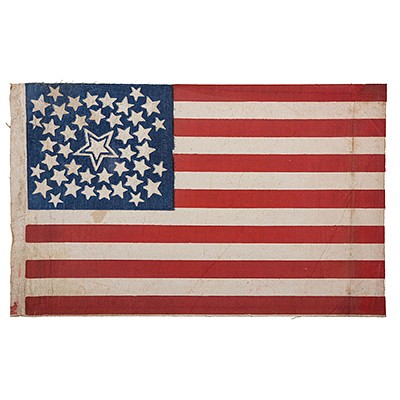





![[LIMITED EDITIONS CLUB] 2 vols. The House of Mirth, Diary of Country Priest](https://s1.img.bidsquare.com/item/m/2979/29793737.jpeg?t=1TN7Db)
![[LIMITED EDITIONS CLUB] Dürrenmatt, Friedrich. Oedipus. Photogravure plates by Marie Cosindas](https://s1.img.bidsquare.com/item/m/2979/29793752.jpeg?t=1TN7Wl)

